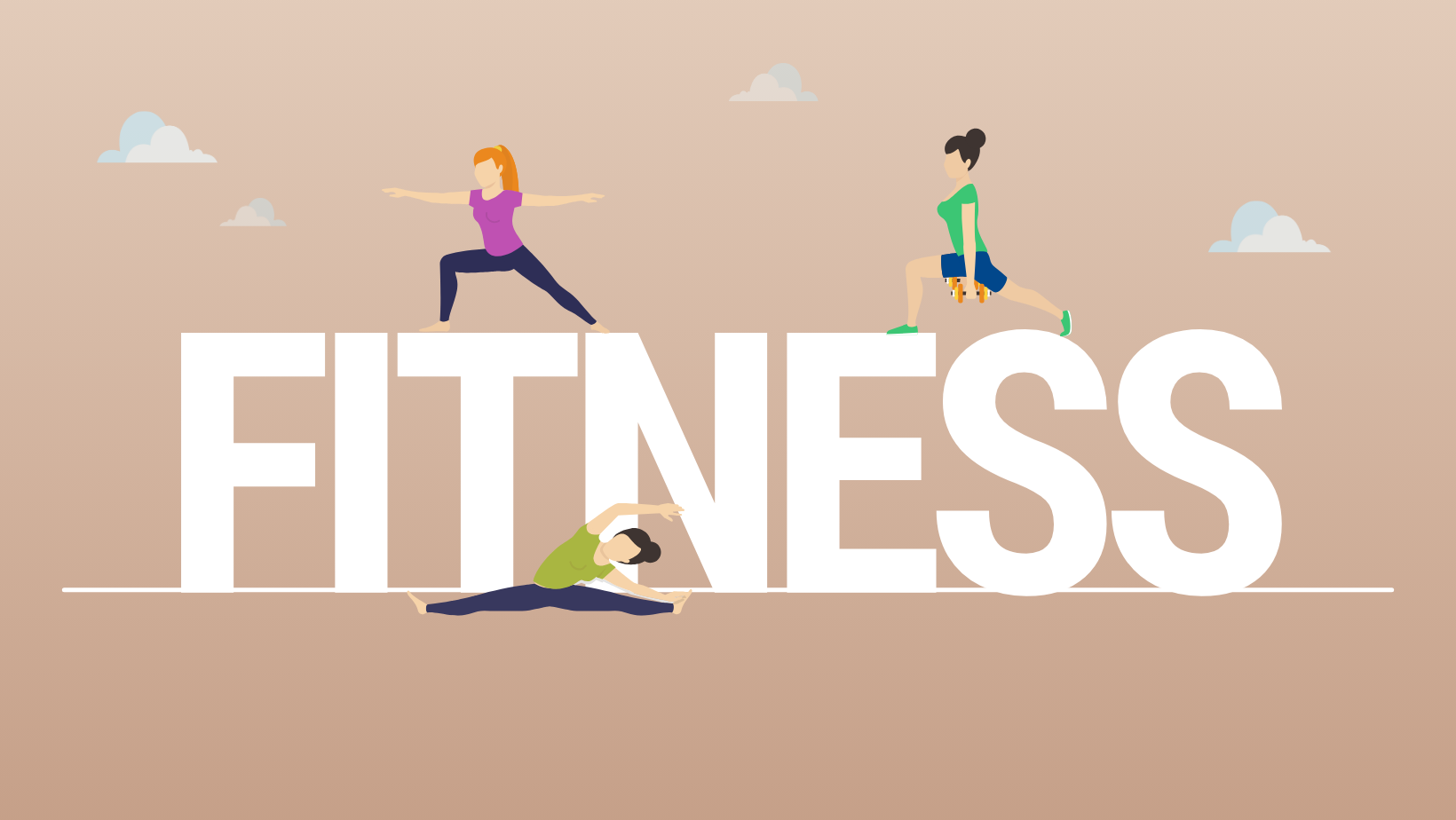Explore the Basics of Fitness and Exercise: A Beginner’s Guide to a Healthier Life
Fitness and exercise refer to physical activities that enhance or maintain physical health, strength, and overall well-being. These activities can range from simple walks and stretches to structured gym routines and sports. Exercise isn’t just about looking fit; it's about feeling strong, preventing illness, and improving mental health.
In a world where sedentary lifestyles are increasingly common especially due to desk jobs, screen time, and remote work incorporating regular physical activity is more important than ever. Fitness doesn’t have a one-size-fits-all approach. It’s about finding movement that suits your body, goals, and daily routine.

Whether you’re walking 30 minutes a day or following a custom workout plan, every step toward being active supports long-term health and quality of life.
Why Fitness Is Important in Today’s World
Modern lifestyles are often marked by physical inactivity, high stress, and poor posture. These factors contribute to a range of health issues, including:
-
Obesity and weight gain
-
Heart disease and hypertension
-
Type 2 diabetes
-
Mental health challenges like anxiety and depression
-
Reduced mobility and flexibility
The importance of fitness today goes beyond physical appearance—it plays a key role in mental clarity, productivity, and even emotional balance. With growing awareness about mental and physical health, more people are turning to regular exercise as a primary form of self-care.
Who Is Affected?
-
Office workers: Spending hours at a desk can lead to muscle stiffness and poor circulation.
-
Teenagers: Increasing screen time is linked to lower activity levels and weight-related issues.
-
Older adults: Staying active helps with bone strength, balance, and reducing the risk of falls.
-
People with chronic conditions: Guided exercise can manage symptoms and improve quality of life.
Fitness Trends and Updates in the Past Year
The fitness industry is rapidly evolving, especially after the COVID-19 pandemic shifted many people toward home workouts and digital platforms. Some of the most notable developments from 2024–2025 include:
Top Trends:
| Trend | Description |
|---|---|
| Wearable Tech | Devices like Fitbit, Apple Watch, and Garmin track movement, heart rate, sleep, and more. |
| Hybrid Fitness | A mix of in-person and virtual workouts through apps or live streams. |
| Mental Wellness Integration | Combining mindfulness with movement, such as yoga and walking meditation. |
| Functional Training | Focuses on mobility and core strength for everyday movements. |
| Short Workouts | Micro workouts (10–15 minutes) gain popularity for busy schedules. |
-
WHO updated physical activity guidelines encouraging 150–300 minutes of moderate-intensity aerobic activity weekly.
-
Rising adoption of AI-based fitness apps that customize workouts (e.g., Freeletics, Fitbod).
-
More corporate wellness programs include fitness reimbursements and virtual challenges.
Policies and Government Programs Supporting Fitness
Many countries are investing in public health campaigns and policies to combat inactivity and encourage active living. Government involvement varies by country, but here are some global and regional highlights:
India:
-
Fit India Movement (launched 2019): Ongoing initiative by the Government of India promoting healthy lifestyles in schools, workplaces, and communities.
-
Khelo India Program: Aims to revive sports culture and fitness awareness among youth.
United States:
-
CDC’s Active People, Healthy Nation: A nationwide effort to help 27 million Americans become more physically active by 2027.
-
Physical Education (PE) mandates in schools across states are being reinforced.
European Union:
-
EU Physical Activity Guidelines: Encourage member states to include physical activity in transport, education, and healthcare planning.
-
Bike-to-Work and Active School Travel programs are increasing in popularity.
Useful Tools and Resources for Beginners
Starting a fitness journey can be overwhelming, but many free and affordable tools are available to help you plan, track, and stay motivated.
Top Apps:
-
MyFitnessPal – Tracks calories and physical activity
-
Nike Training Club – Offers guided workouts for all levels
-
Google Fit – Simple activity and heart tracking synced with Android devices
-
7 Minute Workout – Short workouts using bodyweight only
Free Online Resources:
-
YouTube Channels like FitnessBlender, Yoga with Adriene, and HASfit
-
CDC Physical Activity Guidelines: cdc.gov/physicalactivity
-
WHO Global Recommendations: who.int
Fitness Calculators:
| Calculator | Use |
|---|---|
| BMI Calculator | Understand your body mass index range |
| Target Heart Rate Calculator | Monitor cardio workout intensity |
| Calorie Burn Estimator | Estimate calories burned per activity |
-
Facebook Groups, Reddit forums (like r/fitness), and local running clubs
-
Gym buddies or workplace wellness groups
-
Personal trainers (virtual or in-person)
Frequently Asked Questions (FAQs)
1. How much exercise should a beginner do each week?
For most adults, the WHO recommends at least 150 minutes of moderate aerobic activity or 75 minutes of vigorous activity per week, plus two days of muscle-strengthening exercises.
2. Do I need to join a gym to be fit?
No. Walking, home workouts, yoga, or sports can be just as effective. The key is consistency and choosing activities you enjoy.
3. Can fitness improve mental health?
Yes. Regular exercise has been shown to reduce symptoms of depression, anxiety, and stress, while improving mood and sleep quality.
4. What’s the best type of exercise to start with?
Start with low-impact exercises like walking, swimming, or stretching. As you build strength, you can try resistance training or cardio sessions.
5. Are short workouts (under 20 minutes) effective?
Absolutely. Research supports the benefits of micro workouts, especially if done with intensity or frequency. Short sessions still improve heart health, metabolism, and mood.
Final Thoughts
Understanding the basics of fitness and exercise is the first step toward building a healthier, more active life. It’s not about perfection it’s about progress. By staying informed, making small changes, and using available tools and community support, anyone can begin a sustainable fitness journey.
Staying active isn’t a trend it’s a necessity for long-term well-being. Whether you’re just starting out or returning to fitness after a break, every movement matters.
